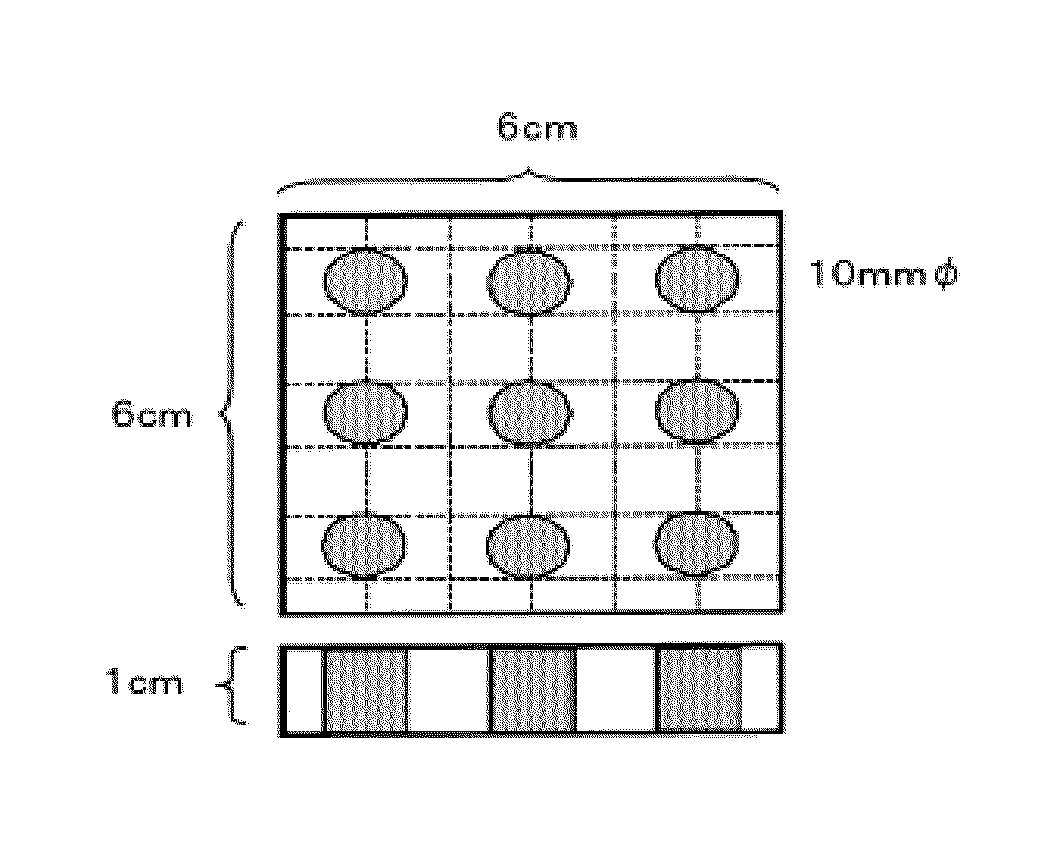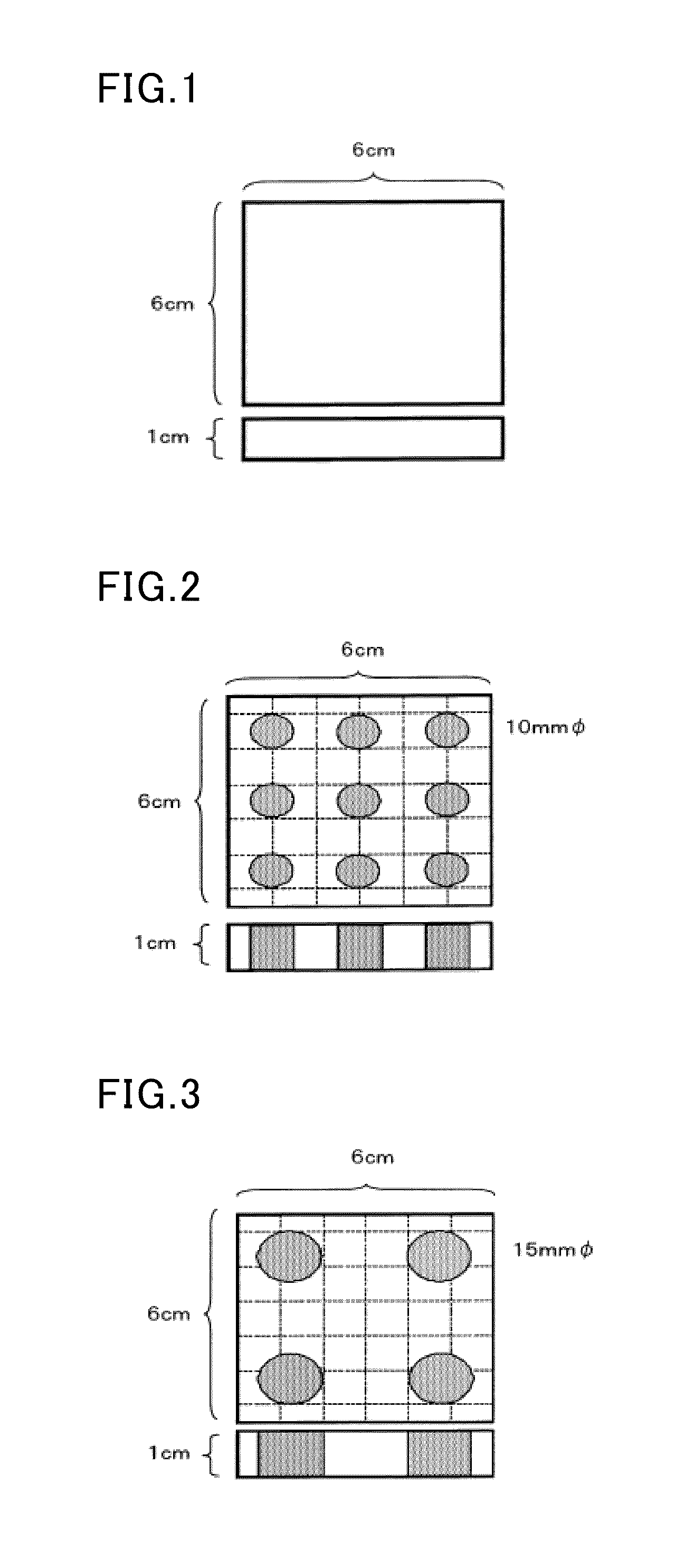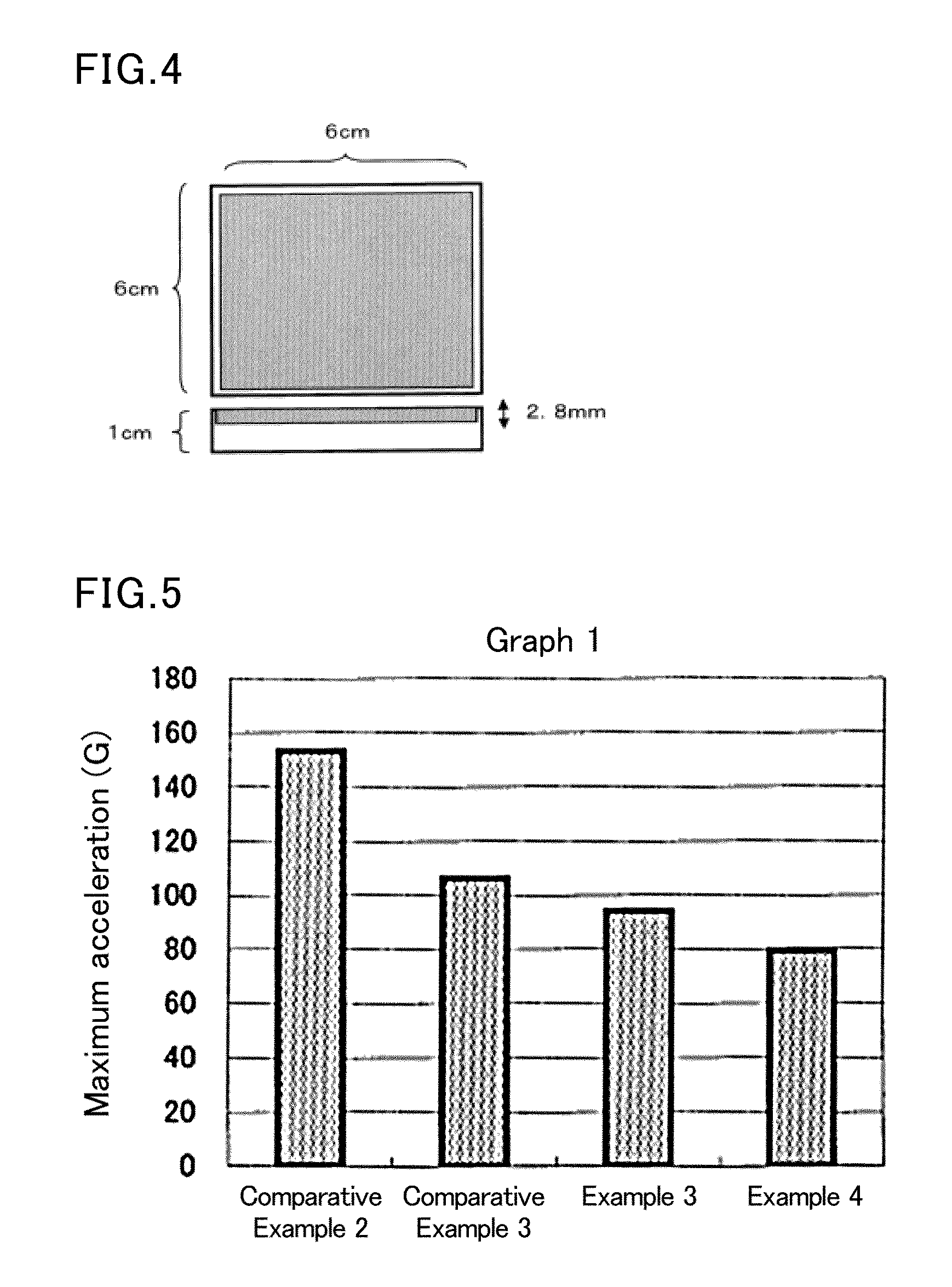Composite molded body and method for producing same
a technology of composite materials and molded bodies, applied in the field of composite materials, can solve problems such as impairment of the properties of polyurethane foam, and achieve the effect of high degree of design freedom
- Summary
- Abstract
- Description
- Claims
- Application Information
AI Technical Summary
Benefits of technology
Problems solved by technology
Method used
Image
Examples
production example 1
Method for Producing Poly(n-Butyl Acrylate) Having Acryloyl Group at Both Terminals
[0100]100 parts of n-butyl acrylate was deoxygenated. The interior of a reactor was deoxygenated; 0.42 parts of cuprous bromide, 20 parts of the deoxygenated n-butyl acrylate, 4.4 parts of acetonitrile, and 1.8 parts of diethyl 2,5-dibromoadipate were added and mixed at 80° C.; and a polymerization reaction was initiated by adding 0.018 parts of pentamethyldiethylenetriamine (abbreviated below as triamine). The remaining 80 parts of n-butyl acrylate was added gradually to allow the polymerization reaction to proceed. During the polymerization, the polymerization rate was adjusted by further adding the triamine appropriately, and the polymerization was allowed to proceed with the interior temperature being adjusted to approximately 80° C. to approximately 90° C. An oxygen-nitrogen mixed gas was introduced into the vapor phase of the reactor at the point at which the monomer conversion ratio (polymeriza...
production example 2
Method for Producing Poly(n-Butyl Acrylate) Having Acryloyl Group at One Terminal
[0101]100 parts of n-butyl acrylate was deoxygenated. The interior of a reactor was deoxygenated; 0.42 parts of cuprous bromide, 20 parts of the deoxygenated n-butyl acrylate, 4.4 parts of acetonitrile, and 1.9 parts of ethyl α-bromobutyrate were added and mixed at 80° C.; and a polymerization reaction was initiated by adding 0.018 parts of pentamethyldiethylenetriamine (abbreviated below as triamine). The remaining 80 parts of n-butyl acrylate was added gradually to allow the polymerization reaction to proceed. During the polymerization, the polymerization rate was adjusted by further adding the triamine appropriately, and the polymerization was allowed to proceed with the interior temperature being adjusted to approximately 80° C. to approximately 90° C. An oxygen-nitrogen mixed gas was introduced into the vapor phase of the reactor at the point at which the monomer conversion ratio (polymerization re...
example 1
[0103]The 1 cm-thick polyoxypropylene oxide foam sheet obtained as above was cut to 6 cm square (FIG. 1) and scallop-shaped cavities with φ10 mm were cut out as shown in FIG. 2.
[0104]The curable composition [C-1] was injected into these scallop-shaped cavities and irradiated with ultraviolet rays to form a composite of gel-like cured products in the cavities shown in FIG. 2. At that time the peak irradiance of ultraviolet rays was 1,300 mW / cm2 and the energy density was 3,000 mJ / cm2. The gel-like cured products had a hardness of 7.
[0105]No deformation of the shape of the foam was observed during the composite formation, and in terms of time the target composite article could be obtained in a short period of time of about 1 minute.
PUM
| Property | Measurement | Unit |
|---|---|---|
| heat resistant temperature | aaaaa | aaaaa |
| molecular weight distribution | aaaaa | aaaaa |
| molecular weight distribution | aaaaa | aaaaa |
Abstract
Description
Claims
Application Information
 Login to View More
Login to View More - R&D
- Intellectual Property
- Life Sciences
- Materials
- Tech Scout
- Unparalleled Data Quality
- Higher Quality Content
- 60% Fewer Hallucinations
Browse by: Latest US Patents, China's latest patents, Technical Efficacy Thesaurus, Application Domain, Technology Topic, Popular Technical Reports.
© 2025 PatSnap. All rights reserved.Legal|Privacy policy|Modern Slavery Act Transparency Statement|Sitemap|About US| Contact US: help@patsnap.com



